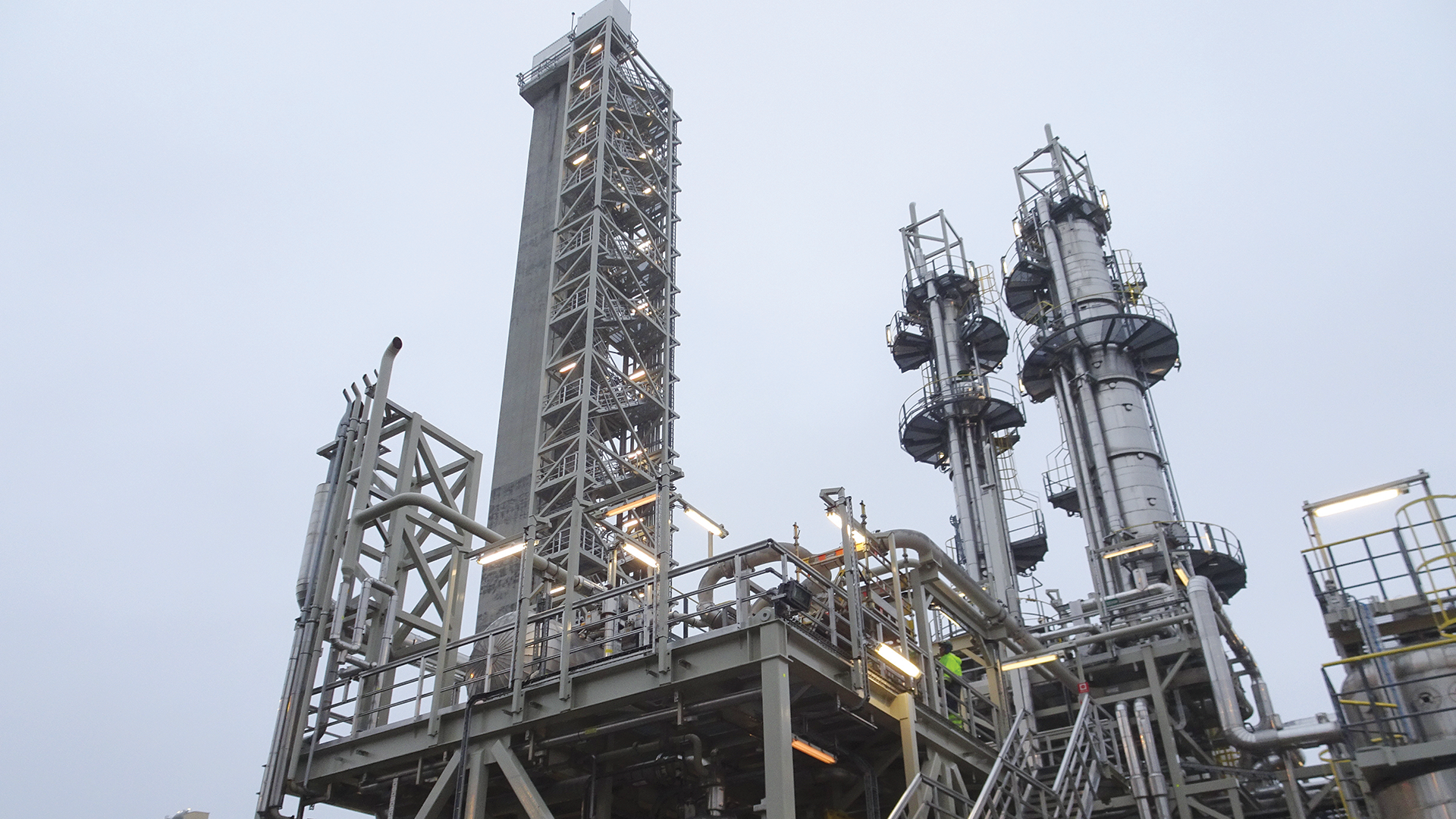Carbon Capture and Storage: Are We There Yet?

I’VE wanted to visit Norway for some time but I never thought it would be on safari. Following in the footsteps of Helen Tunnicliffe on her “CCS Safari” last year, I travelled to Norway to check in on the progress towards a full-scale CCS project.
Norway’s planned full-scale CCS demonstration project includes capturing carbon at two plants, transporting it to an onshore facility on the west coast, and then piping the gas under the sea floor for permanent storage. Norway has set up a state enterprise, Gassnova, whose main goal is to support the development of the full-scale project. This includes advising the ministry of petroleum and energy about CCS, researching CCS through the CLIMIT research programme in partnership with the Norwegian Research Council, and managing the state’s interest in the Technology Centre Mongstad (TCM). This is the world’s largest CCS test centre, and is operated by Gassnova, Equinor, Shell, and Total.
The two sites where carbon capture will be trialled are Norcem’s cement factory in Brevik and Fortum Oslo Varme’s waste-to-energy plant at Klemetsrud. A third site, Yara’s ammonium plant, was originally part of the concept study but funding was dropped for Yara in May, as it was deemed that the technology wouldn’t be easily transferrable to other plants.
Norcem and Fortum Oslo Varme plan to capture around 400,000 t/y of CO2 each, which will then be transported via ship to the storage site. Equinor, along with partners Shell and Total, are carrying out the FEED studies for transportation and storage on the Norwegian continental shelf. A final investment decision is expected in 2020/2021, with the project beginning operations in 2023/2024.
The stops on the safari included Norcem, Fortum Oslo Varme, and TCM, where an evening of talks was held in the shadow of the Mongstad refinery.
To CCS or not to CCS – that’s not the question
“The question is how to CCS and how to maximise the opportunities that comes with it,” said Jeanette Iren Moen, chief advisor at the Federation of Norwegian Industries. “There is not one single answer but all answers we know of today also include CCS.”
There seemed to be no doubt from any attendees that CCS is essential in meeting the Paris Agreement and there was a strong focus on how we can achieve those goals. Sverre Overå, project director of Equinor’s Northern Lights project, discussed the safety of storing CO2 underground. Equinor has been storing CO2 underground since 1996 in the Sleipner field and is thus confident about storing CO2 as part of Norway’s full-scale CCS project.
“We have 22 years of operation on the Norwegian continental shelf from injecting for permanent storage. We know that it works and we know that we can operate it. We are monitoring it continuously.”
He also discussed the planned onshore receiving facility, explaining that the CO2 can’t be directly injected into the seabed due to technological challenges and the necessity for a safe harbour in the often stormy North Sea. Instead, the CO2 will be pumped through the pipeline from the receiving facility to the subsea storage area. The facility is being designed with a higher capacity than will be needed initially, and it will also be possible to scale it up in the future. The injection wells are also scalable, as additional wells can be added.
Another key topic was the necessity of cutting emissions from industrial facilities, something that cannot be solved solely by renewable energy. “We really have to start reducing emissions from industries,” said Trude Sundset, CEO of Gassnova.
"You can put as many solar panels on cement factories as you want but you will still have very high emissions.” Cement production is responsible for around 8% of global CO2 emissions through the calcination process.
Following the talks, we had dinner, where Olav Øye, senior advisor for CCS at Bellona, made the fairly reasonable assumption that we had heard enough speeches for one evening, and instead entertained us with a song he had written on CCS. Impressively, he managed to work the phrase “Norwegian continental shelf” into the lyrics.
The next morning we got a tour of a rather rainy TCM. I wasn’t actually expecting to see any wildlife on this particular safari, so I was quite surprised to see a herd of deer that apparently live around the refinery. To my untrained eye, the facility was a bizarre jumble of pipes, but I did appreciate seeing “where the magic happens”, as our tour guide described it.
TCM has the advantage of having two flue gas sources that can be used for testing; one from the neighbouring natural gas plant which has a CO2 content of around 3.5%, and one from the residual fluid catalytic cracker which has a CO2 content of around 13%, comparable to emission from a coal-fired plant. Companies including Aker Solutions, Carbon Clean Solutions, and ION Engineering have used TCM to test their carbon capture technologies. Vendors can test various methods and technologies such as different solvents, the best way to optimise the capture cost, determine how the amine product becomes degraded over time and how to limit that degradation, and what is the best percentage of CO2 to catch in order to optimise energy usage.
Over the course of the safari I learned that CCS has more potential applications than I initially realised.
Recent Editions
Catch up on the latest news, views and jobs from The Chemical Engineer. Below are the four latest issues. View a wider selection of the archive from within the Magazine section of this site.




